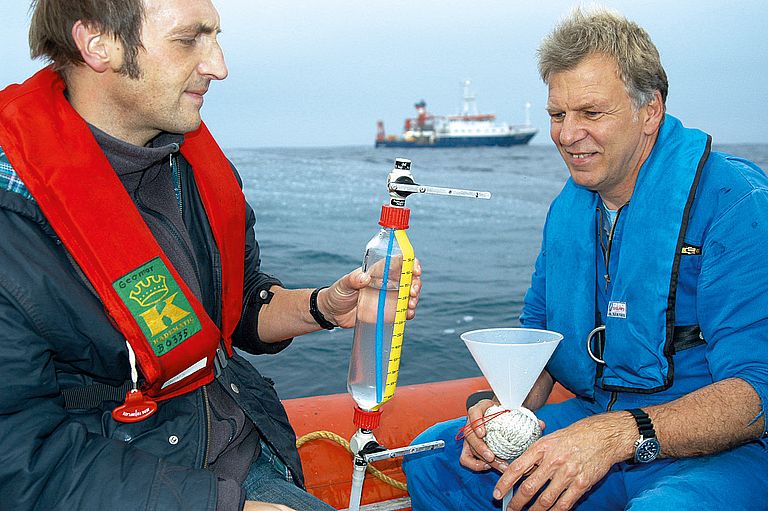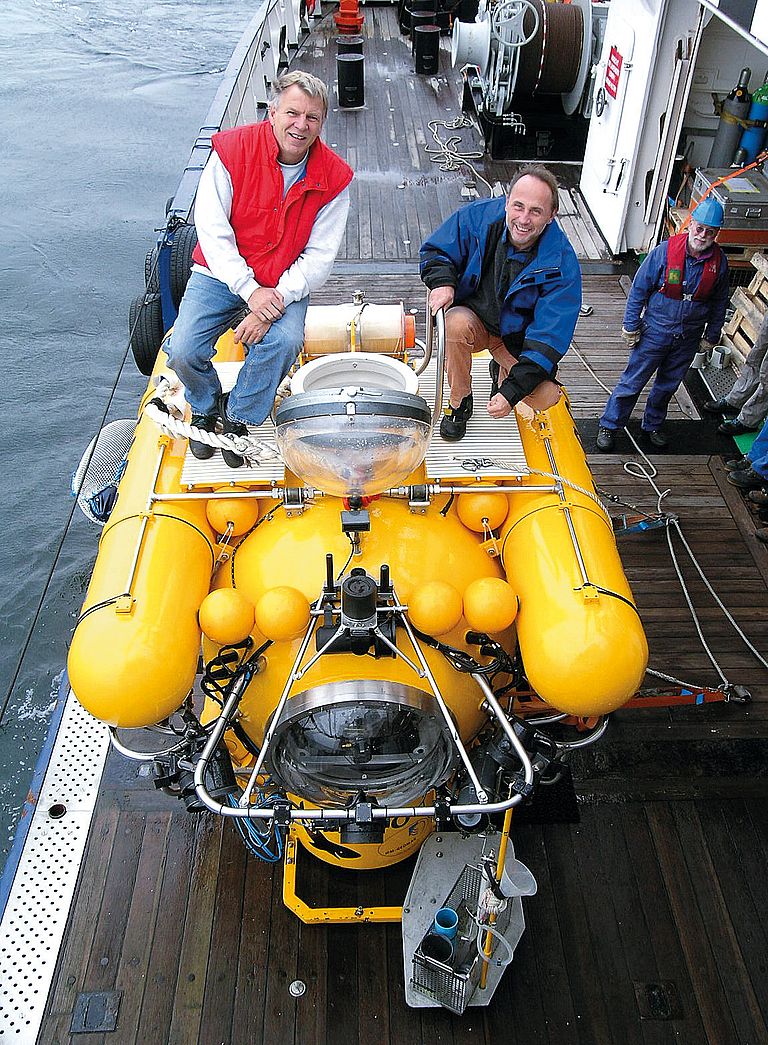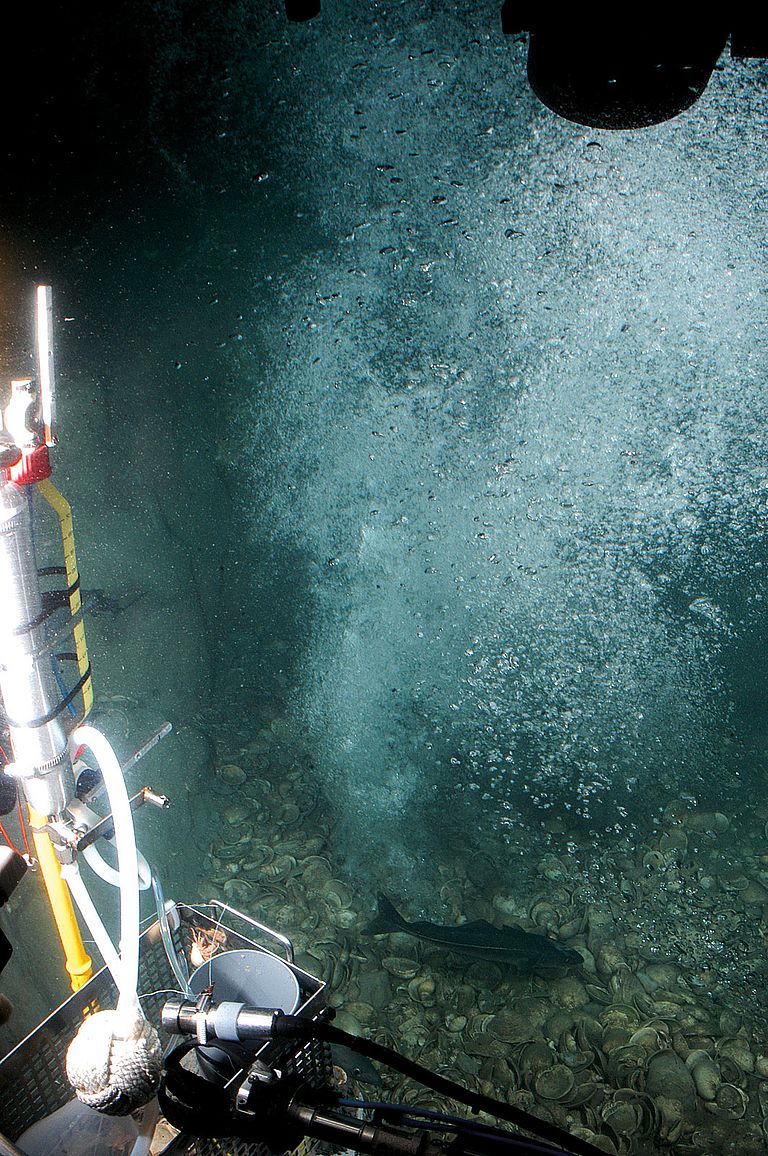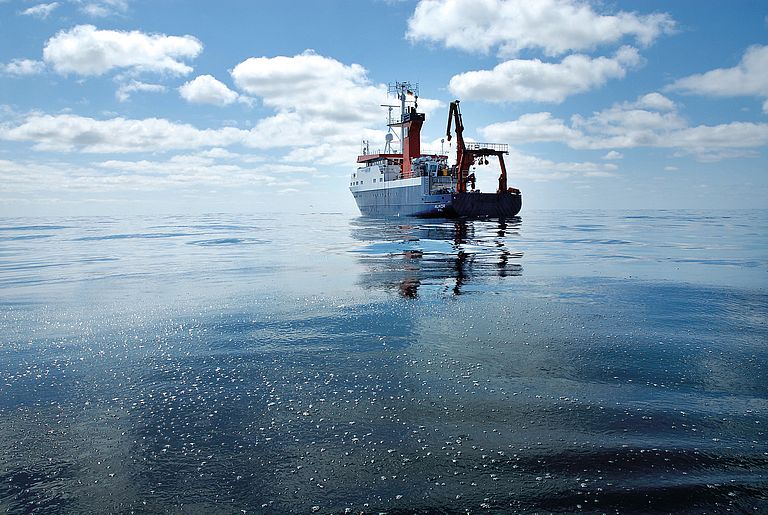New insights into the fate of methane released at the seafloor
Details about emissions from a crater at an abandoned well site published
Joint press release of Leibniz Institute for Baltic Sea Research Warnemünde (IOW) and GEOMAR Helmholtz Centre for Ocean Research Kiel
In November 20, 1990, a well drilled by order of Mobil North Sea (the predecessor of ExxonMobil) in the UK sector 22 in about 100 metres water depth in the North Sea, about 200 kilometres east of Scotland, encountered shallow gas. The subsequent blowout resulted in a massive release of methane that created a crater at the seafloor. During a research expedition in 1994, major gas emissions were still evident at this site. “The concentrations we measured in the surface waters are still the highest I have ever encountered at sea”, reports Prof. Gregor Rehder, the marine chemist at the Leibniz Institute for Baltic Sea Research (IOW) who performed the investigations. Another scientific expedition in 2005 verified ongoing gas bubble emissions from a crater 60 metres wide and 20 metres deep up to the sea surface. A dive with the German research submersible JAGO into the crater in 2006 provided detailed insight into the gas leak, which was in a water depth of 120 metres. Gas release was still evident and even visible at the sea surface.
In 2011, the British Department of Energy and Climate Change (DECC), initiated a mission to quantify the emission rate of gas from the crater and to study the fate of the gas in the water column as it transited to the sea surface and atmosphere. The work was supported by ExxonMobil and undertaken by a multidisciplinary team lead by Dr. Ira Leifer (Bubbleology Research International, California, USA) including Dr. Alan Judd (Alan Judd Partnership, Northumberland, UK), Dr. Peter Linke (GEOMAR Helmholtz Centre for Ocean Research Kiel, Germany) and David Long (British Geological Survey, Edinburgh, UK) and other specialists from Germany, the USA, The Netherlands and the UK.
In addition to a general overview from a scientific perspective, the interdisciplinary team provided the first-ever quantification of emissions from a massive shallow bubble plume and long-term monitoring data. The results are presented in a special issue of the "Journal of Marine and Petroleum Geology". "GEOMAR is involved in seven of the 13 articles. Four of them are written y lead authors from GEOMAR", Dr. Linke emphasizes. The biologist was chief scientist of three expeditions to the crater, the cruises ALKOR AL374 (2011), ALKOR AL412 (2013) and CELTIC EXPLORER CE12010 (2012), as well as adviser to the campaign of DECC and ExxonMobil. "In total, information from six GEOMAR expeditions is included in this work."
During their expeditions in 2011 and 2012, the scientists noticed that the seepage was still going on. But in summer, the North Sea is strongly stratified with layers of waters of different temperatures clearly separated from each other by the thermocline. “In periods of little mixing, only very little methane reaches the surface with the bubbles”, says Dr. Linke. “So the methane is likely to be transported away from the well by currents, diluted and dispersed. Part of it is taken up by microbes at the sea floor and in the water column, but we do not know yet how organisms living in the vicinity of the well are affected.”
In contrast, from late autumn to spring, when the North Sea is well mixed and occasionally stirred up by storms, bubbles containing more methane are expected to reach the sea surface and the atmosphere. Measurements of atmospheric methane found highest concentrations in an area of about four by four kilometres centred on the blowout crater. Compared to the overall budget for the North Sea, emissions into the atmosphere from the abandoned well seemed significant, but not alarming. “At first, we were puzzled about the fact that we did not find higher concentrations above the thermocline”, reports Dr. Jens Schneider von Deimling, geophysicist at GEOMAR, “However, after the discovery of a large bubble vortex forming in the wake of gas bubble release from the seafloor, we suggest that this hitherto unknown process enhances gas ventilation and exchange. As a consequence bubbles from larger plumes might not contain a lot of methane anymore when they reach the surface”.
Long-term observations with so-called landers, platforms for various measurements and experiments located at the seafloor, showed variations in the emissions. In December 2011, a large eruption with dramatically increased emissions was recorded, and subsequent investigation with the remotely operated vehicle ROV KIEL 6000 revealed that the crater’s features had been altered considerably. “This suggests that eruptive forces play a sporadic, but important role”, concludes Dr. Linke. “The crater is still very active today and will probably continue to be so for quite a few years. We think that it is not just necessary to monitor this crater – we also need to use it as a natural laboratory, learn from it and reduce the risk at other exploration sites.” The scientists recommend the collection of additional data to test some important hypotheses, and to investigate the fate of the methane in the water column and at the sea floor in more detail, in addition to developing improved monitoring. Another expedition to the crater is planned for late August 2016.
Reference:
Ira Leifer and Alan Judd (Editors, 2015): The 22/4b Study: Investigations of the Geologic, Water-Column, and Atmospheric Phenomena of a Persistent North Sea Gas Blowout. Marine and Petroleum Geology, Volume 68, Part B, Pages 705-882 (December 2015)
Links:
Department of Energy & Climate Change (DECC)
British Geological Survey
Leibniz Institute for Baltic Sea Research Warnemünde (IOW)
Press release of the Scripps Institution of Oceanography
Contact:
Maike Nicolai (GEOMAR Communication & Media), Phone: +49 431/600-2807, presse(at)geomar.de






